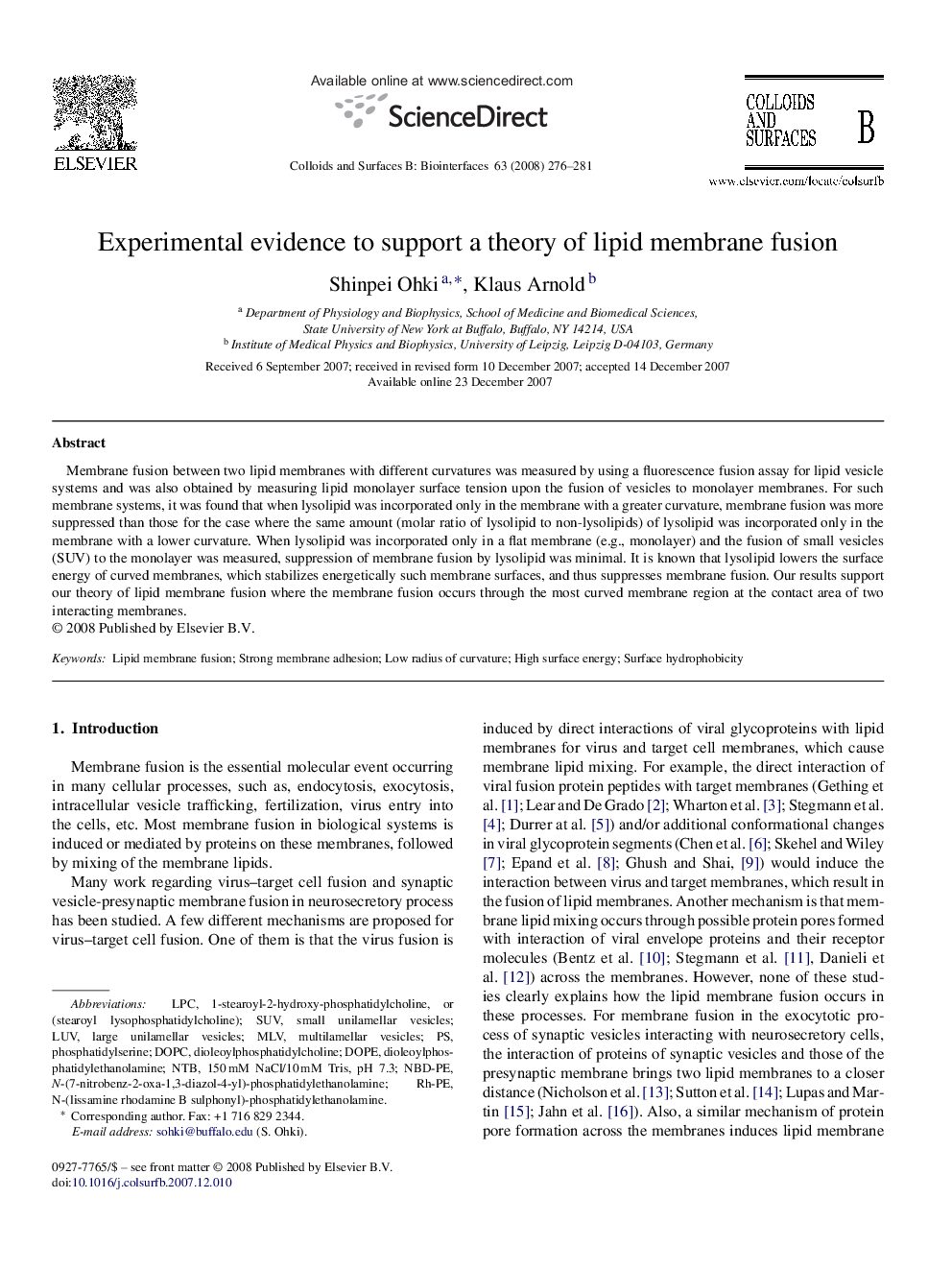| Article ID | Journal | Published Year | Pages | File Type |
|---|---|---|---|---|
| 602362 | Colloids and Surfaces B: Biointerfaces | 2008 | 6 Pages |
Membrane fusion between two lipid membranes with different curvatures was measured by using a fluorescence fusion assay for lipid vesicle systems and was also obtained by measuring lipid monolayer surface tension upon the fusion of vesicles to monolayer membranes. For such membrane systems, it was found that when lysolipid was incorporated only in the membrane with a greater curvature, membrane fusion was more suppressed than those for the case where the same amount (molar ratio of lysolipid to non-lysolipids) of lysolipid was incorporated only in the membrane with a lower curvature. When lysolipid was incorporated only in a flat membrane (e.g., monolayer) and the fusion of small vesicles (SUV) to the monolayer was measured, suppression of membrane fusion by lysolipid was minimal. It is known that lysolipid lowers the surface energy of curved membranes, which stabilizes energetically such membrane surfaces, and thus suppresses membrane fusion. Our results support our theory of lipid membrane fusion where the membrane fusion occurs through the most curved membrane region at the contact area of two interacting membranes.
